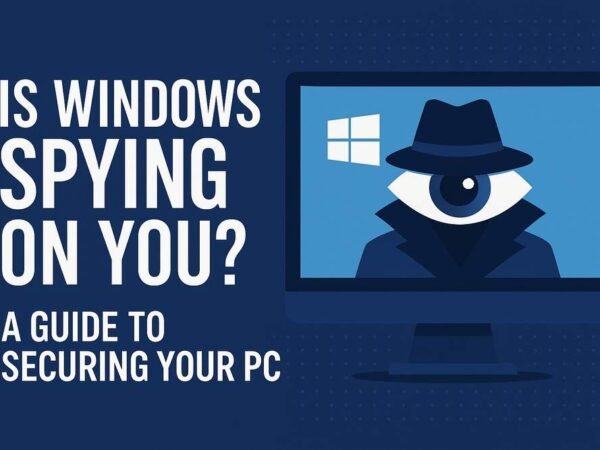Uncrewed aerial vehicles, better known as drones, are now a standard part of forward-thinking fire and EMS fleets. When smoke, floodwater, or fallen debris block traditional views, these small aircraft lift cameras, thermal sensors, and communication relays straight above the chaos. Within seconds, incident command gains data that used to require helicopters, ladder trucks, or blind guessing. Yet real value arrives only when flight operations mesh with the Incident Command System (ICS), FAA waivers, and tight SOPs. Because drones hover where ladders cannot and cost a fraction of a helicopter hour, even rural volunteer companies are forming UAS teams. Meanwhile, metropolitan departments integrate feeds directly into their CAD, allowing dispatch to recommend roof cuts or evacuation corridors in real-time.
Why Aerial Recon Matters
Ground crews labor with limited sight lines, echoing radio traffic, and time‑critical choices. A drone climbing 60 meters offers a real-time map of roof integrity, flame spread, crowd movement, or rising water. Research from NASA’s Disaster Response Lab confirms that live overhead imagery reduces size-up time by up to 42 percent. Faster intel means safer tactics, fewer wasted hose lays, and quicker access to victims.
Sensor Packages That Save Lives
Thermal‑visible combo cameras expose hotspots through thick smoke, gas sensors sniff dangerous leaks, multispectral lenses map wildfire fuel loads, and dropline kits deliver lifesaving gear—all in a single flight.
- Thermal + Visible Duo Cams: Reveal hotspots and locate victims at night.
- Gas Spectrometers: Detect chlorine, ammonia, or explosive vapors in seconds.
- Multispectral Lenses: Track wildfire edges and vegetation stress for predictive maps.
- Loudspeaker / Dropline Kits: Deliver instructions or equipment to stranded civilians.
Integrating Drone Feeds Into Command Dashboards
Streaming software enables the display of 1080p or thermal overlays on tablets, MDTs, and large-screen command boards. Courses such as the ICS-300 intermediate class train officers to incorporate that information into tactical worksheets, ensuring every division sees the same picture. Geotagged markers highlight collapse zones or exits, and crews wearing augmented‑reality helmets can even view those flags inside their visors.
Drone‑as‑First‑Responder (DFR) Programs
In DFR setups, a rooftop dock launches a pre‑staged quadcopter the moment 911 data hits CAD. Average arrival: under three minutes. A 2024 NASA field study found that DFR reduced interior search times by 25 percent in suburban drills.
Lower Exposure, Higher Safety
Before ordering a primary search, chiefs can check drone thermal video for signs of floor sag or flashover. Collapse indicators, leaking tank cars, or energized solar panels become obvious from above—keeping firefighters out of red zones until conditions stabilize.
Airborne Relays When Radios Fail
Wildfires can fry repeaters, and hurricanes can snap fiber. A drone hovering at 400 feet rebroadcasts VHF, LTE, or Wi‑Fi, stitching together units spread across canyons or high‑rises. Some payloads spin up a temporary mesh that routes ePCR data back to hospitals—a capability highlighted in the FAA’s UAS pilot‑integration findings.
Training, Licensing, and Airspace Rules
Departments assign Part 107‑certified pilots or secure COAs for public missions. Annual check‑rides plus scenario simulations—wind‑gust compensation, night ops, and lost‑link drills—keep skills sharp. The Aerial Operations course now includes UAS coordination, helping ladder and drone teams share the same vertical space.
Privacy and Ethical Balance
Agencies publish flight policies, carve no‑record zones, and purge footage not tied to investigations. Public briefings calm fears of surveillance, while coordination with aviation authorities prevents near‑miss reports and reinforces professional credibility.
FAQ — Drone Use in Emergency Response
How high can public‑safety drones legally fly?
The FAA caps routine flights at 400 feet AGL unless within 400 feet of a taller structure or under a jurisdiction‑approved waiver.
Can drones operate during nighttime fires?
Yes—thermal sensors thrive in darkness, and FAA Part 107 allows night ops with anti‑collision lighting after proper training.
What if GPS drops out in a concrete canyon?
Pilots switch to ATTI or optical-flow modes, while the command restricts the mission profile until GNSS lock is regained.
Are UAV videos admissible in court?
Footage with proper chain‑of‑custody and timestamp metadata is routinely accepted for arson cases and after‑action reviews.
3 Practical Tips for Fast, Safe Uptake
- Stage backup batteries in a temperature‑controlled case to avoid cold‑soak failures.
- Log every flight in CAD so historical data aligns with incident reports and grant metrics.
- Run quarterly mixed drills with ladder, drone, and haz‑mat teams to iron out radio discipline.
The Next Horizon for Public‑Safety UAVs
Swarm scripts promise simultaneous perimeter mapping, while on‑board AI already flags human silhouettes through smoke. Lithium-ion next-gen packs could extend mission endurance beyond 45 minutes. Departments mastering today’s single‑bird tactics will pivot fastest as these advances roll out.
Do Read: A Practical Overview of the SpeedyBee F405 AIO Flight Controller













